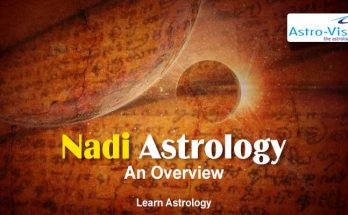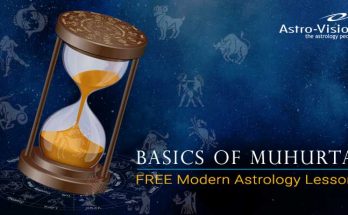 We are confronted in our day-to-day life with the question of selection of an auspicious time. Sometimes it is very difficult to find such a time on any particular day. The main point to be looked into in selecting the proper time is the strength of the Moon. Many a time it happens that even after selecting a particular time considering all the planets, we do not get the proper result. We must presume then that there may be some mistake in our calculations and it may be that even though all other factors are good, the position of the Moon could have been unhelpful.
We are confronted in our day-to-day life with the question of selection of an auspicious time. Sometimes it is very difficult to find such a time on any particular day. The main point to be looked into in selecting the proper time is the strength of the Moon. Many a time it happens that even after selecting a particular time considering all the planets, we do not get the proper result. We must presume then that there may be some mistake in our calculations and it may be that even though all other factors are good, the position of the Moon could have been unhelpful.
The following details on the selection of the exact time based on the Moon’s movements are culled from ancient Jain literature.
The Moon stays in one sign for about two and a half days. During this sojourn, he passes through twelve Avastas as follows:
1) Proshita 2) Hruta 3) Mruta 4) Jaya 5) Hasa 6) Harsha 7) Rati 8) Nidra 9) Bhukti 10) Jara 11) Bhaya and 12) Shushita
Of these, the 4th, 5th, 6th, 7th, 9th and the 12th Avastas are good and the 1st, 2nd, 3rd, 8th,10th and 11th are evil.
Find out the time taken for the Moon to travel in a particular sign and divide it by 12.Each portion will be one Avasta period with the first Avasta for each sign being as shown in Table I. The other Avastas follow in order.
| Table I: First Avastas | |
| Moon in | First Avasta |
| Aries | Proshita |
| Taurus | Hruta . |
| Gemini | Mrita |
| Cancer | Jaya |
| Leo | Hasa |
| Virgo | Harsha |
| Libra | Rati |
| Scorpio | Nidra |
| Sagittarius | Bhukti |
| Capricorn | Jara |
| Aquarius | Bhaya |
| Pisces | Shushita |
When the Moon is in a Subha Avasta, even an evil Sun will give good results. In selecting the Moon-sign, the Moon should be benefic,that is, he should be in Sukla 5th or Panchami to Krishna 5th or panchami of the lunar month. Further the Moon should not be in 4th,8th or 12th from the Janma Rasi.
After selecting this broad timing, the particular hour can be selected. The day is divided into 32 portions, 16 in the daytime and 16 in nighttime; Find out the Dinamana (duration of day time) or Ratrimana (duration of nighttime) for the particular day and divide it by 16. Each portion will be of about 45 minutes. These are called ever-auspicious Muhurtas for specific purposes. In all there are sixteen such Muhurtas and each is meant for a specific activity.
Table II: Muhurtas for Specific Activity
| SI. No. | Name | Activity |
| 1 | Raudra | Drastic, severe acts |
| 2 | Shweta | Catching four legged animals |
| 3 | Maitra | Donations, Mantrasiddhi etc |
| 4 | Charvata | Tantric – Pratistha etc |
| 5 | Jayadeva | Any good purpose |
| 6 | Vairochana | For all good acts |
| 7 | Turdeva | Study of religious scriptures |
| 8 | Abhijit | Entering new house, bride’s first entry into husband’s house |
| 9 | Ravana | Secret acts – attack on enemy |
| 10 | Baalava | Planning for success over enemies |
| 11 | Vibhishana | For all good acts |
| 12 | Nandana | Starting a new machine |
| 13 | Yaamya | Tantric Rituals |
| 14 | Soumya | Dance – Music – Elocution |
| 15 | Bhargava | Marriage – Love – Union |
| 16 | Savitra | Sainthood, accepting Yantra – Religious scriptures etc. |
The Muhurtas come in regular order. The different Muhurtas start on different weekdays as shown in Table III and are reckoned from sunrise and sunset in the order shown in Table II.
Table III
| Weekday | First Muhurtas |
| Sunday | Raudra |
| Monday | Maitra |
| Tuesday | Jayadeva |
| Wednesday | Turdeo |
| Thursday | Ravana |
| Fridays | Vibhishana |
| Saturday | Yamya |






